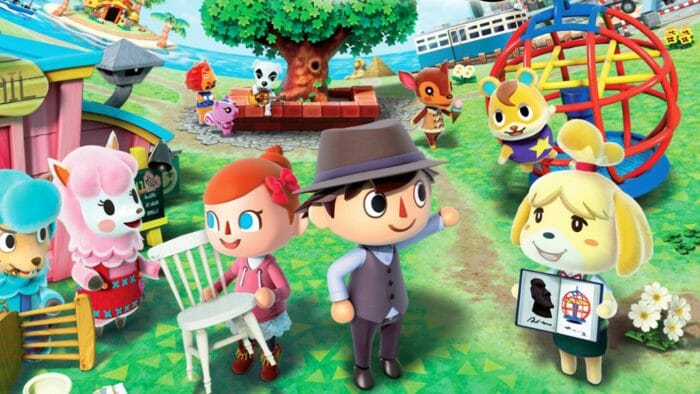Box artwork of Animal Crossing: New Leaf. (Flickr)
Between the announcement of Isabelle’s addition to the roster of the upcoming Super Smash Bros. Ultimate and the announcement that a new Animal Crossing title for the Nintendo Switch is in the works (the second of which was delivered by a cartoonish, anthropomorphic raccoon called Tom Nook), the Nintendo Direct on September 13, 2018, contained no shortage of exciting news for Animal Crossing fans. So, as we wait patiently for these games to come out, why not take a look at the last Animal Crossing game to be released: Animal Crossing: New Leaf?
New Leaf, which was revealed at E3 2010 and released on June 9, 2013 in North America for the Nintendo 3DS, is the fourth and most recent entry in the main Animal Crossing series. Because each of its predecessors were commercially and critically successful, the title had a lot to live up to, but this turned out to be no problem: this community simulation game is a joy to play, and I oftentimes find myself coming back to it even now.
As you start up a new file of Animal Crossing: New Leaf, you are given control of a customizable villager who is moving into a new town (which you name) populated by a random assortment of anthropomorphic animals (This assortment is different for each player.). When you arrive, you are mistaken for the town’s new mayor and end up getting the position. As in other entries in the Animal Crossing series, you are able to spend your time however you wish, for there are no clear-cut goals. New Leaf is played in real time, meaning that the seasons and time of day (and the events that come with them) change as they do in the real world. Processes and events take time to occur. The action of expanding one’s in-game home, for example, takes twenty-four hours of real time to be completed. The main objective of the game, if any, is to furnish and expand a house and construct a town that a player finds satisfactory. All of this costs in-game money, or “Bells.” Bells can be earned by selling objects that players find both inside and outside of their town. Regarding the role of being the in-game town’s mayor, players can enact Ordinances to suit their playstyle and set up Public Works Projects as they work to improve their town.
The number of tasks players that can complete daily in New Leaf is quite large: one person may choose to pick fruits and go fishing in their town or to go shopping for furniture and visit the expressive residents of their town while another might want to visit Tortimer Island and go hunting for bugs or to visit the local real estate agent, Tom Nook, to begin the process of expanding their home and visit the Town Hall to ask their assistant, Isabelle, about citizen satisfaction. Plenty of chores are guaranteed to keep players busy. However, it is important to note that none of these tasks need to feel like chores, for there is no time limit for them, and there is no penalty for taking all the time one needs to finish them.
Unlike most games, Animal Crossing: New Leaf is not supposed to be difficult. On the contrary, it is meant to be a way for players to wind down as they make a few steps towards developing the town of their dreams. Controls are simple and easy to pick up on, and there are few obstacles to overcome; thus, the challenge of New Leaf comes from being patient. One can only do so much in a single day since the game is being played in real-time, so players must be willing to spend a good amount of time on the game if they wish to create a town with which they are completely content. This may turn off some players, but it is an important aspect of the game, nonetheless.
It is also worth noting that Animal Crossing: New Leaf has no ending. The game goes on forever, for there is no goal that must be met for players to be able to consider themselves “done” with the game. Completionists will most certainly find this to be frustrating, but casual players can take comfort in the fact that their experience only needs to end when they want it to.
Artistically, the game is quite pleasant. Characters and landscapes are colorful and detailed, and I feel myself getting sucked into the game’s world as soon as I start up my 3DS and click on New Leaf’s icon. The graphics of the game are better than those of previous Animal Crossing titles but admittedly are, in my opinion, beginning to show their age due to the technical limitations of the 3DS. Nevertheless, the game is indeed aesthetically pleasing, and New Leaf’s soundtrack consists of songs that are both relaxing and catchy.
New Leaf has received positive responses from critics such as Famitsu, IGN, and Polygon, earning scores of 39/40, 9.6/10, and 9/10, respectively. If you own a Nintendo 3DS and are a fan of games in which you get the chance to interact with all sorts of lively characters as you sit back and learn to find joy in the simplicities of life, Animal Crossing: New Leaf is the game for you.
My Rating:
9/10








